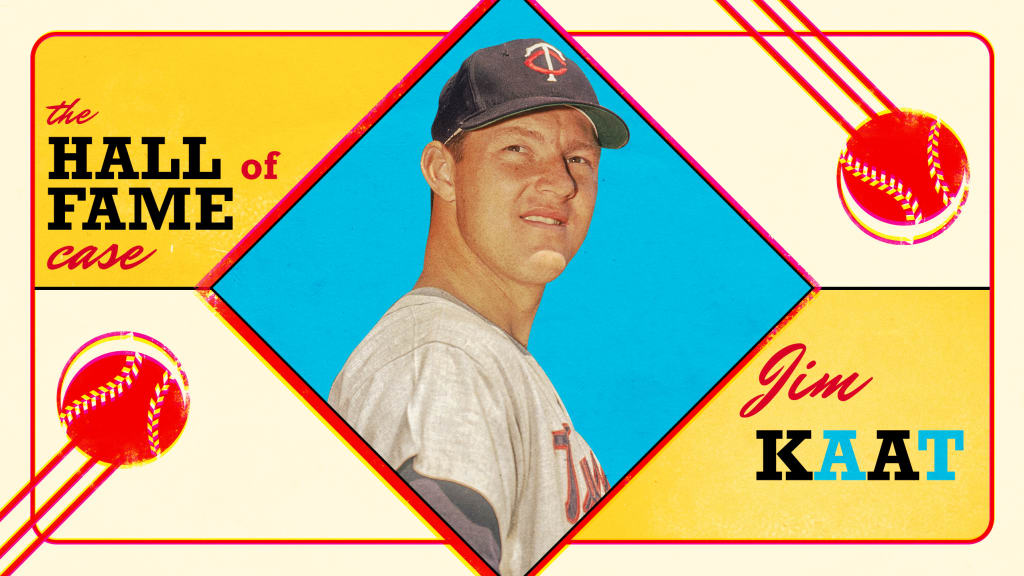
On Dec. 5, the Hall of Fame’s Early Baseball Era Committee (pre-1950) and Golden Days Era Committee (1950-69) will meet to vote on 10-player ballots, with the results announced live on MLB Network that night at 6 p.m. ET. We're here to offer a primer on the 20 players who are up for consideration. Click here to view the other posts.
Player: Jim Kaat
Years: 1959-83 (25 MLB seasons)
MLB career stats
283 wins, 3.45 ERA, 2,461 K's, 180 complete games, 31 shutouts, 17 saves
Bio: When one thinks of Jim Kaat, the word “durability” comes to mind -- this is a guy, after all, whose career spanned four decades in the big leagues. Only three other players -- Willie McCovey, Minnie Miñoso and Tim McCarver -- did that in AL/NL history. Over the course of his career, Kaat went from being a top-notch starter to a quality reliever.
As a starter, he had three 20-win seasons (he led the AL in wins in 1966 with 25) and often was among the league leaders in innings pitched. Kaat had 14 seasons of 200 innings or more, and twice he eclipsed the 300 mark. That almost certainly will never happen again.
Furthermore, Kaat was one of the best fielding pitchers in baseball history, with 16 Gold Gloves to back it up.
“If you take a look, he played a lot of years to attain what he attained,” said Hank Allen, Kaat’s teammate on the 1973 White Sox. “He was a good left-handed pitcher. He didn’t have overpowering stuff, but he was a guy who was durable and attacked the hitters. He didn’t try to be fine like all those other left-handers used to be. He would come right at you to get you out.”
When his days as a starter were over, Kaat became a quality lefty specialist with St. Louis in the early 1980s. In fact, Kaat helped the Cardinals win the 1982 World Series, their first title since '67. He appeared in four World Series games against the Brewers and allowed one run in 2 1/3 innings.
Best moment: In Game 2 of the 1965 World Series with the Twins, Kaat outpitched Dodgers ace Sandy Koufax, who won the Cy Young Award that year. Kaat pitched all nine innings in a 5-1 victory and allowed the run on seven hits. He held Los Angeles hitless until the top of the fifth inning, when Ron Fairly led off with a single to right field. The victory gave the Twins a 2-0 lead in the Series, but they lost to the Dodgers in seven games.
Notable numbers: By the time his playing career ended, Kaat had bWAR of 50.5, higher than that of Bob Lemon (48.2), who is enshrined in Cooperstown. Lemon won 207 games during his 13 years in the big leagues.
In 1973, when Kaat's time ended with the Twins, it looked like he was finished as a starter. But then the White Sox selected him off waivers, and he had a resurgence, winning 20 games twice (1974 and '75) and was among the league leaders in innings pitched.
According to Allen, it helped that Kaat was reunited with pitching coach Johnny Sain. Kaat was a fastball-slider-changeup pitcher when he joined the White Sox, but he added another pitch with Chicago.
“When he came to the White Sox, Johnny Sain helped him because he didn’t have much of a curveball,” Allen remembered. “Sain helped him develop his curveball, and he worked with him, worked with him. Jim was able to use that curveball and it worked for him, and that prolonged his career. He was able to develop another pitch for opponents to think about.”
Beyond the stats: Kaat showed that he could make adjustments once he was past his prime. During his final five years in the Majors, Kaat spent most of his time as a middle reliever, winning 22 games and saving 12 more with a 3.88 ERA.
